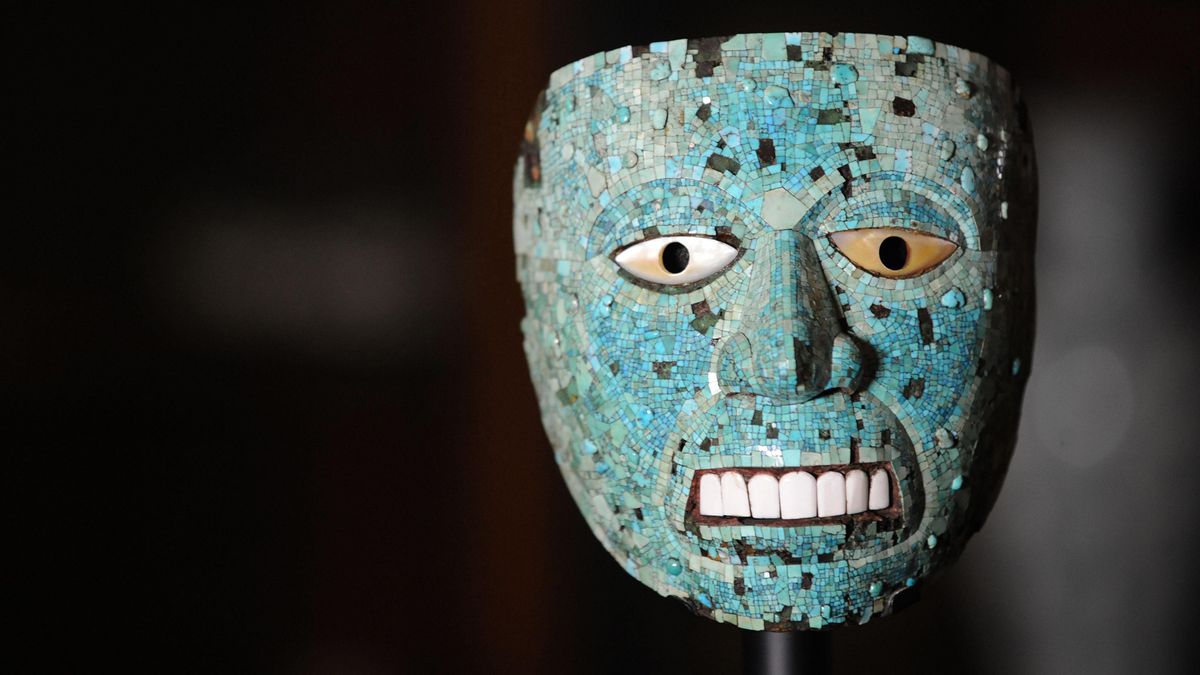What it is: A turquoise-encrusted wooden mask from the Aztec civilization
Where it is from: Somewhere in Mesoamerica
When it was made: Between 1400 and 1521
Related: Book of Kells: A 1,200-year-old manuscript made by monks escaping the Vikings
What it tells us about the past:
This mask, which is on display at the British Museum in London, is one of several turquoise objects that the Spanish conquistador Hernán Cortés likely took from the Aztec Empire as treasure in the early 16th century.
The mask was carved out of Spanish cedar and is decorated with turquoise mosaic pieces, mother-of-pearl eyes rimmed with gold, and conch shell teeth, according to the British Museum. The inside is covered in cinnabar, a brick-red mineral that contains mercury. It is about 6.6 inches (16.8 centimeters) tall and has small holes at the temples, suggesting the mask was once worn or affixed to something.
Xiuhtecuhtli, whose name means “turquoise lord” in the Nahuatl language, was the Aztec “new fire” god. The Aztecs kept a “holy fire” continuously burning in the Fire Temple at Tenochtitlan, from which all other fires were lit.
MORE ASTONISHING ARTIFACTS
Once every 52 years, Aztec priests let the fire die out. The high priest, wearing a turquoise mask representing Xiuhtecuhtli, would then perform a Xiuhtlalpilli, or “new fire ceremony“, which involved starting a fire on the chest of a sacrificial victim. When the flames were high, the victim’s heart was cut out and cast into the fire. This ritual ensured the Aztec civilization was renewed for another half century. The darker turquoise mosaic pieces on the cheeks and nose of the mask appear to form a butterfly, another symbol of renewal associated with Xiuhtecuhtli.
But it’s not clear if the mask was ever worn or if it represents Xiuhtecuhtli. In fact, the mask’s raised turquoise may depict the wart-faced god Nanahuatzin, who, according to Aztec mythology, sacrificed himself to the fire and emerged to become the sun.
















